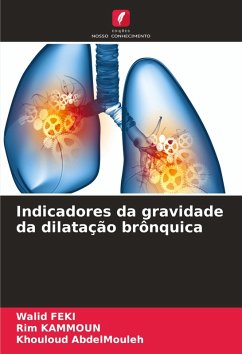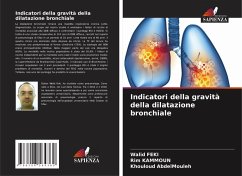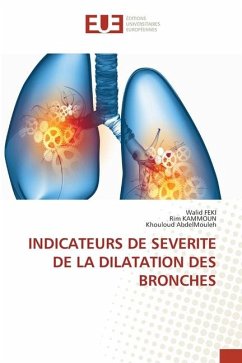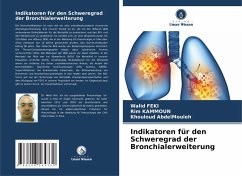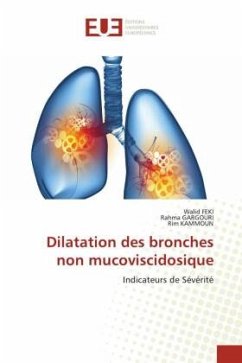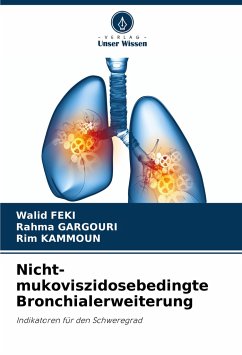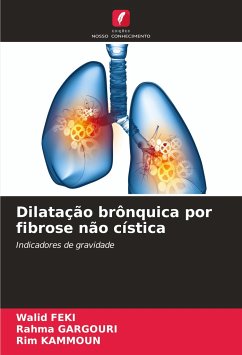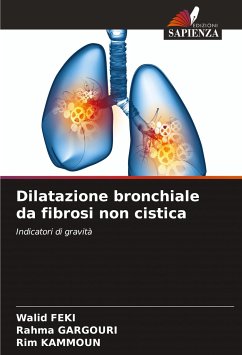
Indicators of the severity of bronchial dilatation
Versandkostenfrei!
Versandfertig in 6-10 Tagen
40,99 €
inkl. MwSt.

PAYBACK Punkte
20 °P sammeln!
Bronchial dilatation remains an under-diagnosed chronic respiratory pathology. The aim of our study is to analyze the mortality risk factors associated with diffuse DDB and to compare the BSI and FACED scores. This is a comparative study of 110 cases of diffuse DDB, collected at the Sfax Pneumology Department covering a period of 10 years. The mean age was 60 years. The clinical picture was dominated by exertional dyspnea. Chest CT showed a predominance of cylindrical forms (75%). The etiologies of DDB were mainly infectious. In the majority of cases, it was idiopathic (65%). Mortality in our ...
Bronchial dilatation remains an under-diagnosed chronic respiratory pathology. The aim of our study is to analyze the mortality risk factors associated with diffuse DDB and to compare the BSI and FACED scores. This is a comparative study of 110 cases of diffuse DDB, collected at the Sfax Pneumology Department covering a period of 10 years. The mean age was 60 years. The clinical picture was dominated by exertional dyspnea. Chest CT showed a predominance of cylindrical forms (75%). The etiologies of DDB were mainly infectious. In the majority of cases, it was idiopathic (65%). Mortality in our population was 20.6%. Independent risk factors for mortality were medium-to-high socioeconomic status, number of comorbidities, certain antecedents (hypertension, asthma, GERD), superinfection by Branhamella Catarrhalis, non-use of Bromhexine, hospitalizations in the preceding 2 years. The BSI score is the best predictor of mortality, hospitalizations and FEV1 decline in our population. On the other hand, no score predicts exacerbations.






